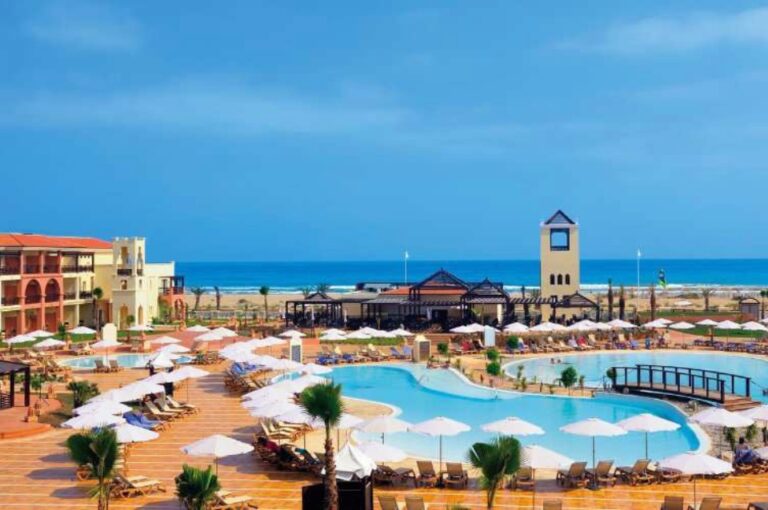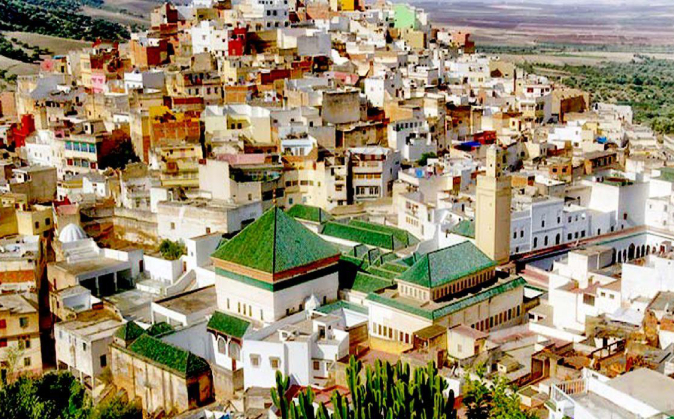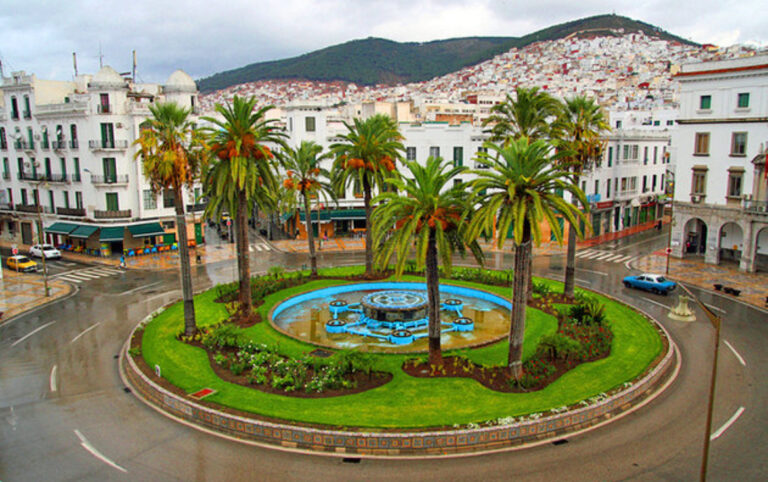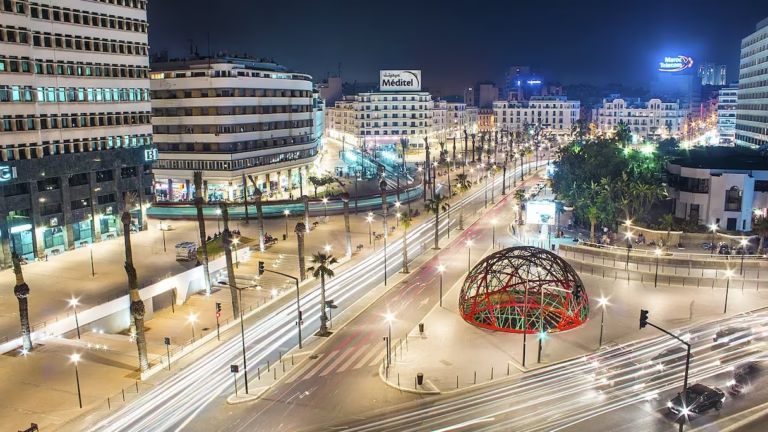Larache: A Coastal Blend of Spanish and Moroccan Heritage
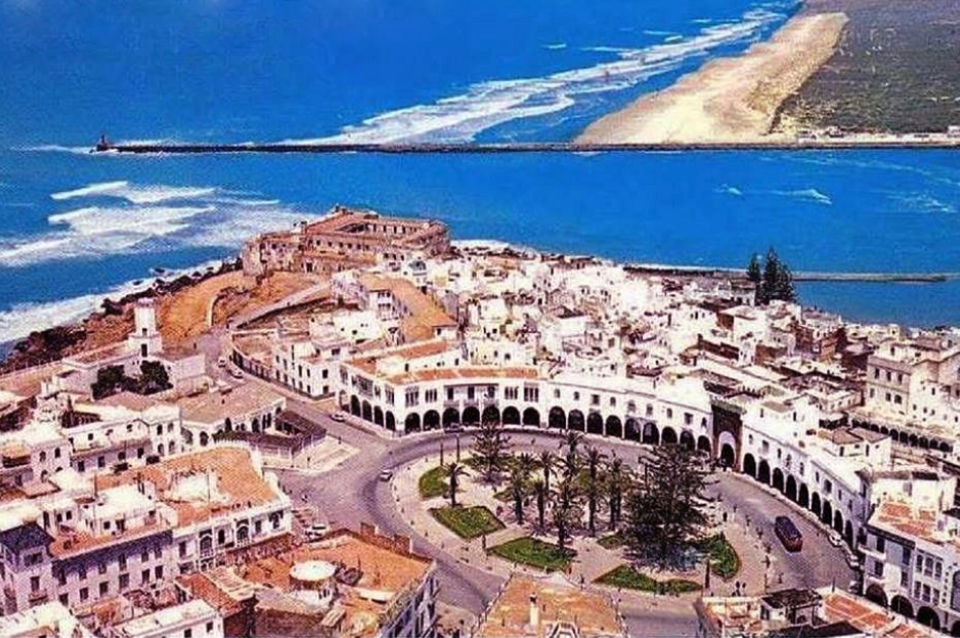
Perched elegantly on Morocco’s Atlantic coastline, Larache is a captivating coastal town where Spanish colonial architecture harmoniously mingles with traditional Moroccan culture. Located approximately 90 kilometers south of Tangier, this enchanting port city offers travelers an authentic Moroccan experience enriched by centuries of cross-cultural influences. With its ancient Phoenician ruins, pristine beaches, and laid-back atmosphere, Larache remains one of northern Morocco’s best-kept secrets.
A Tapestry of History

Ancient Beginnings
The story of Larache begins long before the modern town came into existence. The area was originally settled by Phoenicians during the 7th century BC, who established the ancient city of Lixus on a hill overlooking the Loukkos River estuary. This strategic location made it a vital trading post for centuries, later coming under Carthaginian and then Roman control.
Spanish Colonial Legacy
Larache’s unique character stems largely from its Spanish colonial past. The city was under Spanish rule from 1610 to 1689 and again from 1912 to 1956 during the Spanish Protectorate period. This extended Spanish presence left an indelible mark on the city’s architecture, urban planning, and cultural identity. Unlike most Moroccan cities where French influence dominates, Larache is the only place in Morocco where Spanish seems to be more common than French, although Arabic remains the primary language.
The Spanish knew the city as “El Araish,” and their influence is evident in every corner of the town. From the distinctive Hispano-Moorish buildings to the Spanish-style plazas, Larache represents a fascinating fusion of Mediterranean and North African cultures.
The Fortifications
The old walled city rises in terraces to two forts that dominate it on the north and south. The ancient Kebibat fortress, which now serves as a hospital, dramatically rises from the sea, while Fort La Cigogne, built by the Spaniards around 1700, guards the southern approach to the city. These fortifications tell stories of centuries of strategic importance and maritime defense.
Lixus: Where Myth Meets History

No visit to Larache is complete without exploring the magnificent ruins of Lixus, located just 4 kilometers north of the city center. This ancient archaeological site is steeped in mythology and historical significance.
Mythological Connections
According to Greek mythology, Lixus was believed to be the location of the Garden of the Hesperides, where Hercules performed his eleventh labor—obtaining the golden apples guarded by a hundred-headed dragon. The site was also associated with the legendary Titan Atlas, who was said to support the heavens in this region.
Archaeological Treasures
The site is set on a hill and has been inhabited since prehistoric times. At the base of the settlement, visitors can see the ancient factory built by the Phoenicians. The prosperity of Lixus was founded on fishing and the production of garum, a fermented fish sauce that was exported throughout the Roman Empire.
The ruins feature remarkably preserved structures including:
- Roman amphitheater with sweeping views of the river valley
- Ancient mosaic floors displaying intricate geometric patterns
- Thermal baths showcasing Roman engineering
- Salt-fish factories that produced the famous garum
- Temples and residential quarters
- Defensive walls and gates
The site offers visitors a chance to walk through multiple layers of history, from Phoenician foundations to Roman expansions and Islamic-era additions. The panoramic views from the hilltop alone make the visit worthwhile.
The Heart of the City

Place de la Libération
Built by the Spanish, who called it Plaza de España (some locals still do), this grand oval-shaped plaza is the town’s focal point. Decorated with palm trees and a fountain, it’s encircled by handsome Hispano-Moorish buildings where terrace cafes are a favorite haunt for locals.
This bustling square serves as the social and cultural heart of Larache. Here, locals gather throughout the day to sip mint tea, play cards, and watch the world go by. The plaza’s distinctive Spanish colonial architecture, characterized by whitewashed buildings with colorful Spanish tiles, creates a unique atmosphere that sets Larache apart from other Moroccan cities.
The Medina
The old town of Larache features narrow, winding streets painted in distinctive blue and white hues. Unlike the crowded, labyrinthine medinas of Fez or Marrakech, Larache’s medina is more relaxed and manageable, making it perfect for leisurely exploration.
Wander through the streets to discover:
- Traditional souks selling fresh produce, spices, and handicrafts
- Local bakeries producing fresh bread and pastries
- Small workshops where artisans practice traditional crafts
- Hidden courtyards and residential areas
- Small neighborhood mosques with simple, elegant architecture
The medina’s authentic atmosphere allows visitors to experience daily Moroccan life without the overwhelming tourist crowds found in larger cities.
Castle of the Storks (Château de la Cigogne)
This 17th-century Spanish fortress overlooks the ocean and the Loukkos River estuary. The castle earned its name from the numerous stork nests that crown its towers. From the ramparts, visitors enjoy spectacular views of the Atlantic coastline and the city below.
Coastal Charms
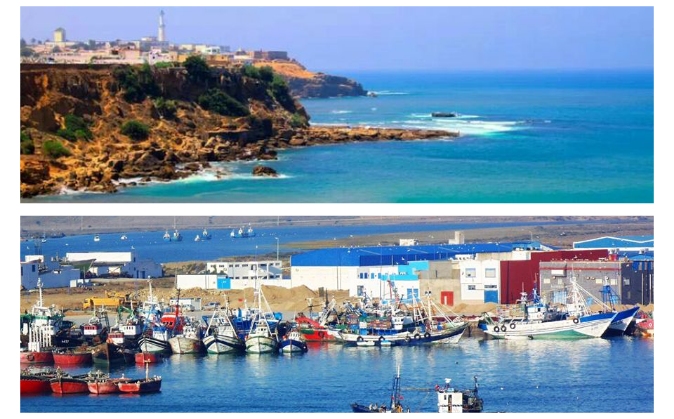
Larache Beach
The city’s main beach stretches for several kilometers along the Atlantic coast, offering golden sand and refreshing ocean breezes. The beach is popular with local families, especially during summer weekends and holidays. The waves attract surfers, while calmer sections are perfect for swimming and sunbathing.
The beachfront promenade is ideal for evening strolls, with locals and visitors alike gathering to watch spectacular Atlantic sunsets. Beach clubs and small restaurants serve fresh grilled fish and seafood throughout the day.
The Port
Larache’s fishing port remains an active and picturesque working harbor. Early morning visits reward travelers with the sight of colorful fishing boats returning with their catch. The port area features fish markets where you can witness the day’s catch being auctioned and sold, and waterfront restaurants serving the freshest seafood imaginable.
Culinary Delights
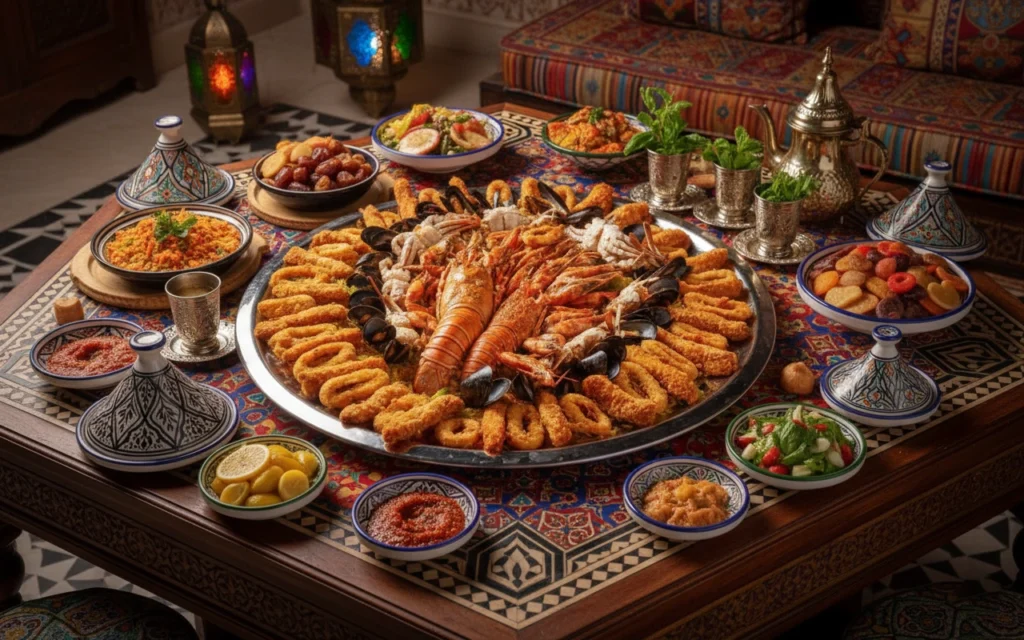
Larache’s coastal location makes it a paradise for seafood lovers. The city’s restaurants and street vendors serve some of Morocco’s finest seafood dishes.
Must-Try Dishes
- Fresh Grilled Fish: Sardines, sea bream, and sole grilled to perfection with Moroccan spices
- Fried Calamari: Tender squid rings with a crispy coating
- Seafood Tagine: A rich stew combining fish, shrimp, and mussels with vegetables
- Paella Larachense: A local variation of Spanish paella reflecting the city’s heritage
- Fish Soup: A hearty, flavorful broth loaded with local catch
- Moroccan Pastilla: Sometimes made with fish instead of the traditional pigeon or chicken
- Fresh Oysters: From nearby Atlantic beds, served with lemon
- Traditional Mint Tea: The perfect complement to any meal
The restaurants around Place de la Libération and along the corniche offer excellent seafood with ocean views. Don’t miss the opportunity to eat at one of the simple fish grill stands near the port, where locals go for the freshest and most affordable seafood.
Cultural Experiences
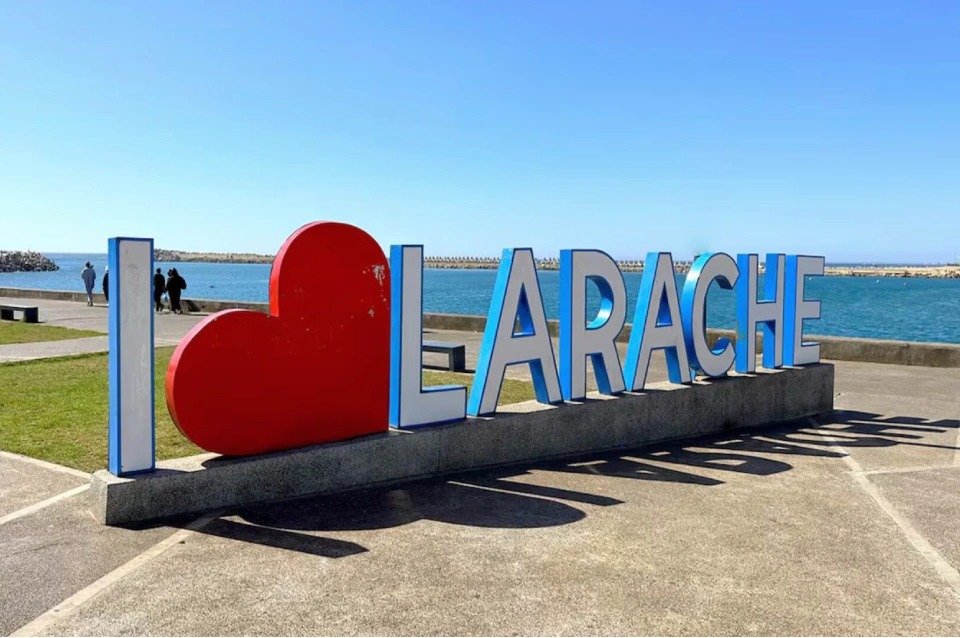
Spanish Cemetery
The Christian cemetery contains graves of Spanish, Portuguese, and other European settlers who made Larache their home during the colonial era. Some tombs date back to the 17th century. This peaceful site offers insight into the city’s multicultural history and houses some impressive funerary monuments.
Local Markets
The weekly markets in Larache showcase the agricultural richness of the surrounding region. Fresh fruits, vegetables, olives, and local products fill colorful stalls. The Thursday market is particularly vibrant, attracting vendors and shoppers from surrounding villages.
Traditional Music and Festivals
Larache celebrates various cultural festivals throughout the year, featuring traditional Moroccan music, Andalusian influences, and Spanish-inspired performances. The Festival of Larache, typically held in summer, brings together musicians, artists, and performers from across Morocco and Spain.
Practical Travel Information

When to Visit
The best time to visit Larache is during spring (March to May) or early autumn (September to October) when temperatures are mild and comfortable. Summer months (June to August) are warmer and busier with domestic tourists but offer the best beach weather. Winters are mild but can be rainy.
- Spring (March-May): 18-24°C, ideal for sightseeing and beach activities
- Summer (June-August): 25-30°C, peak beach season
- Autumn (September-November): 20-26°C, pleasant and less crowded
- Winter (December-February): 12-18°C, quieter with occasional rain
Getting There
By Car: Larache is easily accessible via the coastal highway from Tangier (90 km, 1.5 hours) or Rabat (140 km, 2 hours). The drive along the Atlantic coast is scenic and enjoyable.
By Train: While Larache has a railway station, train service is less frequent than buses. Trains connect to Tangier, Casablanca, and other major cities.
By Bus: Regular and comfortable bus services connect Larache to all major Moroccan cities. CTM and Supratours are reliable bus companies offering frequent departures.
By Taxi: Shared grand taxis run regularly between Larache and nearby cities like Tangier, Asilah, and Ksar El Kebir.
Accommodation
Larache offers a range of accommodation options to suit different budgets:
- Budget: Small hotels and guesthouses in the medina (20-40 EUR/night)
- Mid-range: Comfortable hotels with modern amenities (40-80 EUR/night)
- Upscale: Boutique riads and beachfront hotels (80-150 EUR/night)
Book in advance during summer months and Moroccan holidays when accommodation fills quickly.
Language
- Arabic (Darija): The primary language spoken by locals
- Spanish: Widely understood, especially by older generations
- French: Spoken in hotels and restaurants
- English: Increasingly common among younger people and in tourist areas
Currency
The Moroccan Dirham (MAD) is the local currency. ATMs are readily available throughout the city, and most hotels and larger restaurants accept credit cards. However, carry cash for markets, small shops, and street vendors.
Safety
Larache is generally very safe for tourists. The relaxed atmosphere and smaller size make it less prone to petty crime than larger Moroccan cities. Nevertheless, exercise normal precautions with valuables and be aware of your surroundings.
Essential Travel Tips and Recommendations
- Visit Lixus Early: Arrive at the archaeological site in the morning to avoid afternoon heat and enjoy the best light for photography. Hiring a local guide enriches the experience with historical context and mythological stories.
- Learn Basic Spanish Phrases: While Arabic is essential, knowing some Spanish phrases will delight locals and facilitate communication, especially with older residents who lived through the Spanish Protectorate era.
- Try the Street Food: The fish sandwiches and grilled sardines from street vendors near the port are incredibly fresh and delicious. Look for busy stalls, which indicate high turnover and fresher food.
- Explore on Foot: Larache is a compact city best explored on foot. Comfortable walking shoes are essential for navigating the medina’s cobblestone streets and climbing to the fortifications.
- Sunset at the Corniche: The oceanfront promenade offers spectacular sunset views. Join locals for an evening stroll and experience the city’s social life.
- Respect Local Customs: Dress modestly when exploring the medina and residential areas. Cover shoulders and knees, especially when visiting religious sites.
- Bargain Politely: In the souks, gentle bargaining is expected, but do so respectfully and with good humor. If you’re quoted a price and then find it’s too high, a polite decline is perfectly acceptable.
- Stay Hydrated: The Atlantic breeze can be deceptive; carry water, especially when exploring archaeological sites or spending time on the beach.
- Try Local Cafés: Spend time in traditional cafés around Place de la Libération. They’re perfect for people-watching and experiencing local daily life over mint tea or Spanish-style coffee.
- Visit During Weekdays: The city is more authentic and less crowded during weekdays, as many Moroccan tourists visit on weekends.
- Book Seafood Restaurants Early: Popular seafood restaurants fill quickly, especially during summer evenings and weekends. Consider making reservations or arriving early for dinner.
- Bring Sun Protection: The Atlantic sun can be intense. Pack sunscreen, sunglasses, and a hat, especially if planning beach time or archaeological site visits.
- Check Tide Times: The beach experience varies with tides. Low tide exposes more sand and is ideal for walking, while high tide is better for swimming.
- Exchange Money in Town: While the airport offers currency exchange, you’ll get better rates at banks or exchange offices in the city center.
- Combine with Nearby Destinations: Larache makes an excellent base for exploring northern Morocco. Nearby Asilah (40 km), Chefchaouen (120 km), and Tangier (90 km) are all within easy day-trip distance.
Day Trips from Larache

Asilah (40 km)
This charming whitewashed coastal town is famous for its annual arts festival, beautiful beaches, and Portuguese fortifications. The drive along the coast takes about 30 minutes.
Chefchaouen (120 km)
The famous “Blue Pearl” of Morocco, nestled in the Rif Mountains. Its blue-painted streets and buildings create a magical atmosphere. The journey takes approximately 2 hours through scenic mountain roads.
Tangier (90 km)
Morocco’s cosmopolitan gateway city offers the legendary Kasbah, bustling medina, and the famous Café Hafa. The coastal drive takes about 1.5 hours.
Tetouan (140 km)
A UNESCO World Heritage Site, this city preserves remarkable Spanish-Moorish architecture and one of Morocco’s most authentic medinas.
Larache offers discerning travelers a rare combination of ancient history, colonial heritage, coastal beauty, and authentic Moroccan culture. Its unique Spanish-Moroccan character sets it apart from other destinations in Morocco, while its relaxed atmosphere provides a welcome contrast to the busier imperial cities.
Whether you’re exploring the mythological ruins of Lixus, savoring fresh-grilled sardines by the port, watching the sunset from Spanish fortifications, or simply sipping mint tea in Place de la Libération, Larache invites you to slow down and experience Morocco at a gentler pace. The city’s compact size, friendly locals, and rich cultural tapestry make it an ideal destination for travelers seeking authenticity over tourist attractions.
As Morocco continues to develop its tourism infrastructure, Larache remains refreshingly unspoiled—a coastal gem where history, culture, and natural beauty converge in perfect harmony. Visit now to experience this enchanting city before the wider world discovers its charms.
FAQs
Q1: Is Larache suitable for families with children?
A: Absolutely! Larache is one of Morocco’s most family-friendly destinations. The relaxed pace, clean beaches, and compact size make it ideal for families. Children will enjoy exploring the ancient ruins of Lixus (though supervision is necessary on the hillside), playing on the beach, and watching fishing boats in the harbor. The city is safer and less overwhelming than larger Moroccan cities, and locals are particularly welcoming to families. Many restaurants offer child-friendly options, and the oceanfront promenade is perfect for evening family strolls.
Q2: How much time should I spend in Larache?
A: Two to three days is ideal to fully appreciate Larache and its surroundings. This allows time to explore the medina, visit Lixus ruins, relax on the beach, enjoy the local cuisine, and soak in the city’s unique atmosphere. However, if you’re short on time, a well-planned day trip from Tangier or Asilah can cover the main highlights. If using Larache as a base for exploring northern Morocco, consider staying 4-5 days to include excursions to nearby destinations.
Q3: What’s the best way to visit the Lixus ruins?
A: The Lixus archaeological site is located about 4 kilometers north of Larache on the road to Tangier. You can reach it by taxi (approximately 20-30 dirhams one way), rental car, or as part of an organized tour. The site entrance fee is nominal (around 10-20 dirhams). While you can explore independently, hiring a local guide at the entrance (typically 100-150 dirhams for a comprehensive tour) greatly enriches the experience with historical context, mythological stories, and help navigating the extensive site. Wear comfortable shoes as the terrain is uneven, and bring water and sun protection. Allow 2-3 hours for a thorough visit.
Q4: Are there good seafood restaurants you would recommend?
A: Larache is renowned for its exceptional seafood. For a memorable dining experience, try the restaurants along the corniche and around Place de la Libération. Restaurant Estrella del Mar and Restaurant España are local favorites known for fresh grilled fish and traditional preparations. For the most authentic and affordable experience, head to the simple grills near the fishing port where locals eat—the fish comes straight from the boats to your plate. Casa Pepe offers excellent Spanish-influenced seafood dishes. Regardless of where you choose, ask what was caught that day and trust the server’s recommendations for the freshest options.
Q5: How does Larache differ from other Moroccan coastal cities?
A: Larache stands out for its unique Spanish-Moroccan cultural blend, which is more pronounced here than in any other Moroccan city. The Spanish colonial architecture, the prevalence of the Spanish language, and the Hispano-Moorish aesthetic create a distinctive atmosphere. Unlike the busier tourist destinations of Essaouira or Agadir, Larache maintains an authentic, unhurried character with fewer international tourists, allowing for more genuine cultural interactions. The proximity to the ancient Lixus ruins adds significant historical depth. The city’s combination of archaeological treasures, colonial heritage, pristine beaches, and excellent seafood, all without overwhelming crowds, makes it a unique destination on Morocco’s Atlantic coast.


